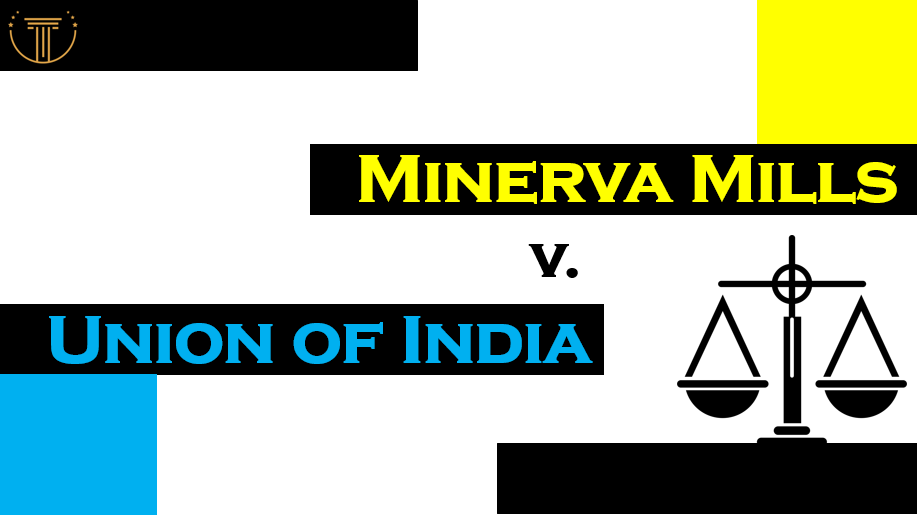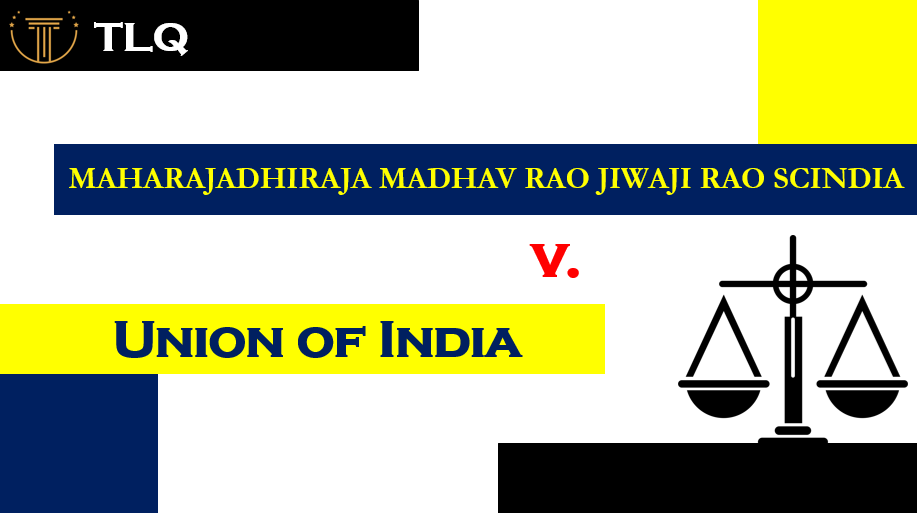Published On: 27th August, 2024
Authored By: Ojaswita Swami
BABU BANARASI DAS UNIVERSITY
NAME OF THE CASE
Aruna Ramchandra Shanbaug v. Union of India and Others
CITATION
WP (Criminal No.) 115 of 2009
NAME OF THE COURT
Hon’ble Supreme Court of India
BENCH
- Hon’ble Justice Markandey Katju
- Hon’ble Justice Gyan Sudha Misra
PARTIES TO THE CASE
- Appellants – Aruna Ramchandra Shanbaug
- Respondents – Union of India and others
DECIDED ON
7th March, 2011
LEGAL PROVISIONS INVOLVED
- Article 21 of The Constitution of India, 1950 states “No person shall be deprived of his life or personal liberty except according to procedure established by law.”[1]
BACKGROUND TO THE CASE
The case of Aruna Shanbaug is a landmark leading case that sought to deal with euthanasia which is one of the most perplexing issues that the courts and legislatures are facing all over the world today[2]. It has laid down one of the most crucial issues of whether a life should be ended by passive or active euthanasia for the benefit of a person provided that it has been done with good intentions.
Ms. Pinki Virani who identifies herself as the next friend of the petitioner has filed a petition on behalf of her under Article 32 of the Constitution of India, 1950 to relieve the petitioner from an undignified life of a permanent vegetative state in which she has been living from 36 years
FACTS OF THE CASE
The petitioner, Aruna Shanbaug, was working as one of the staff nurses at King Edward Memorial Hospital, Parel, Mumbai.
On 27th November 1973, she was attacked by a sweeper in the hospital who strangulated her with a dog chain and pulled her with the dog chain wrapped around her neck. He attempted to commit rape on her but upon finding that she was menstruating, he sodomized her instead. In order to prevent her movement during this act, he twisted the chain around her neck thereby, choking her.[3]
The next morning, a cleaner found her in an unconscious state with blood all over. The strangulation had resulted in a cut to the supply of oxygen to her brain which caused severe damage to her brain. 36 years have passed since this incident and she lies like a lifeless being in one of the wards of the KEM Hospital where she has been taken care of by a dedicated staff for all these years as she was abandoned by her family.
The medical reports have shown that she is surviving only on account of her intake of mashed foods and has no chance of recovery. She is said to be in a permanent vegetative state wherein she is unaware of her surroundings because of the trauma of the incident from which she was never able to recover.
LEGAL ISSUES INVOLVED
- Whether the withdrawal of the life-sustaining system for a person who is in a permanent vegetative state should be permissible?[4]
- Whether a person who is in a vegetative state expresses a wish not to have a life-sustaining system, should his/her wishes be respected?[5]
- Whether a person’s family or friend has the right to seek the withholding or removal of the life-support system if the patient has not expressed such a wish.
- Whether the KEM Hospital staff should make the decisions relating to her life on behalf of her or her family and friends?
IMPORTANT ARGUMENTS
-
CONTENTIONS MADE BY THE PETITIONERS
It was contended, on behalf of the petitioners, that the ‘Right to Life’ guaranteed under Article 21 encompasses ‘the right to live with dignity’. The state in which Aruna is living is not a dignified life and she has been suffering due to a prolonged permanent vegetative state for the past 37 years. The right to Life includes the right to live with utmost dignity and therefore, it also includes the Right to Die with dignity as well.[6]
It was further contended that Aruna has been bedridden for the past 36 years and there is no scope for any improvement in her condition. The next friend of the petitioner, Ms. Pinki Virani has prayed in her petition that the life support system should be simply removed in order to let her die peacefully and naturally on her own so that she doesn’t have to live a suffering life furthermore.
-
CONTENTIONS MADE BY THE RESPONDENTS
It was contended, on behalf of the respondents, that the hospital staff and the Dean of the KEM Hospital have been taking care of her from the past 36 years and diligently fulfilling all her necessities without any comprises.
It was further contended that the hospital staff would continue to take due care of her willingly until she naturally succumbs to death. The hospital staff had developed a close and emotional bond with the victim and were unwilling to practice euthanasia on her as they were willing to take care of her till she naturally died.
Article 21 guarantees everyone in the nation the right to life, and no one has the authority to deny that right. The very phrase “euthanasia” denotes the taking of a living being’s life, making it morally repugnant and illegal.[7]
The responders have prayed that legalizing passive euthanasia will lead to abuse by family members and relatives, ending the kindness and affection from society and that euthanasia is an abuse of justice.
RATIO DECIDENDI OF THE CASE
The Court made a distinction between active euthanasia and passive euthanasia. Active euthanasia deliberate form of mercy killing wherein the patient is deliberately caused to die so that he/she doesn’t have to live a sufferable life anymore. On the other hand, passive euthanasia is one wherein the life support system and necessary medical treatments are simply removed, and the patient is allowed to die on a natural basis on its own.
Active euthanasia is illegal in India unless there is legislation for permitting the same whereas passive euthanasia can be practiced depending upon the circumstances of the concerned case.[8] Legalizing passive euthanasia in India by the Supreme Court aimed to end the suffering of patients enduring unbearable and prolonged pain.
JUDGEMENT
The Hon’ble Division Bench of the Supreme Court of India held that taking into consideration the condition of the petitioner and the arguments presented by the Respondents in the form of medical reports and an exceptional responsibility, Aruna should be allowed to continue to live in such a state till her natural death arrives as there is no prominent reason as to why she should be euthanized when the team of the KEM Hospital is willing to look after her.
Moreover, though she is unaware of her surroundings and is suffering from a permanent vegetative state, her condition has been stable due to the care that has been given to her for the past several years as she is able to breathe, has feelings, intake food and produces necessary stimulus thus, terminating her life would be unjustified. The nurses and the staff of the KEM Hospital have taken due care of Aruna for nearly four decades with full dedication and there is no requirement of practicing passive euthanasia on her.
The Court further laid down a proper procedure and guidelines for practicing passive euthanasia in the ‘rarest of rare circumstances’ thereby, legalizing it wherein the High Court under Article 226 would have a crucial role to play as it would be responsible for making decisions regarding the persistence or withdrawal of the life-support system.[9]
Thus, the petitioner’s plea was rejected by the Supreme Court, and the practice of euthanasia thus, remained unapproved.
CONCLUSION
The case of Aruna Shanbaug stands as one of the most crucial cases in the legal history of India. The landmark judgment laid down, in this case, throws light upon the application of passive euthanasia in the ‘rarest of the rare circumstances’. The Supreme Court of India recognized the ‘Right to Die’ with dignity in case of prolonged suffering which becomes a permanent obstacle to the living of a dignified life.
The court’s directives made sure that the euthanasia approval process would be closely monitored and evaluated, protecting against possible abuse.
Reference(s):
[1] INDIA CONST. art. 21.
[2] Garvita Garg et al Sanskar Pradhan, Case Analysis on Aruna Shanbaug v/s Union of India, Legal Service India, https://www.legalserviceindia.com/legal/article-12094-case-analysis-on-aruna-shanbaug-v-s-union-of-india-.html.
[3] Aruna Shanbaug vs Union of India [Aruna Shanbaug Case Summary], Law Bhoomi (Dec. 1, 2023), https://lawbhoomi.com/aruna-shanbaug-vs-union-of-india/.
[4] Aruna Shanbaug vs Union of India [Aruna Shanbaug Case Summary], Law Bhoomi (Dec. 1, 2023), https://lawbhoomi.com/aruna-shanbaug-vs-union-of-india/.
[5] Aruna Shanbaug vs Union of India [Aruna Shanbaug Case Summary], Law Bhoomi (Dec. 1, 2023), https://lawbhoomi.com/aruna-shanbaug-vs-union-of-india/.
[6] Garvita Garg et al Sanskar Pradhan, Case Analysis on Aruna Shanbaug v/s Union of India, Legal Service India, https://www.legalserviceindia.com/legal/article-12094-case-analysis-on-aruna-shanbaug-v-s-union-of-india-.html[7] Garvita Garg et al Sanskar Pradhan, Case Analysis on Aruna Shanbaug v/s Union of India, Legal Service India, https://www.legalserviceindia.com/legal/article-12094-case-analysis-on-aruna-shanbaug-v-s-union-of-india-.html.
[8] Om Ram, Aruna Ramchandra Shanbaug vs. Union of India Case Summary 2011 SC, Law Planet (May 9, 2022), https://lawplanet.in/aruna-ramchandra-shanbaug-vs-union-of-india/.
[9] Aruna Shanbaug vs Union of India [Aruna Shanbaug Case Summary], Law Bhoomi (Dec. 1, 2023), https://lawbhoomi.com/aruna-shanbaug-vs-union-of-india/.


